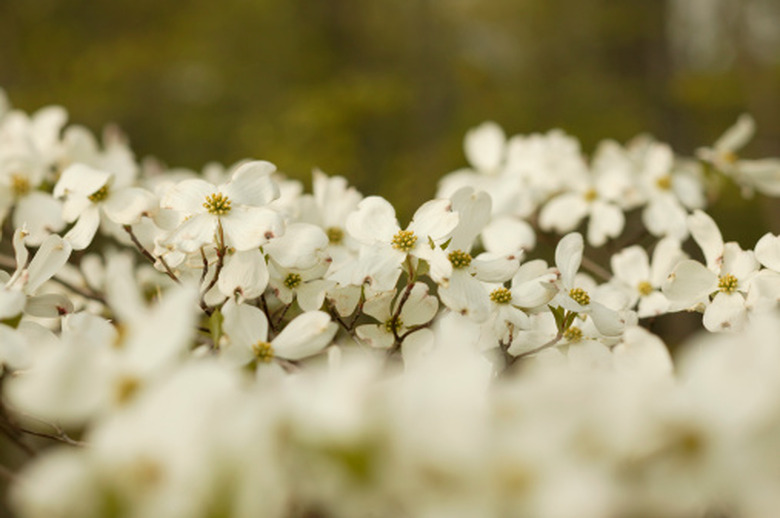The Best Time To Plant Dogwood Trees In Houston, Texas
Dogwood trees covered with white blossoms are one of the first signs of spring in Texas. These small, low-branched trees also are grown for their bright-red fall berries, a favorite of birds, squirrels and deer.
Dogwood trees covered with white blossoms are one of the first signs of spring in Texas. These small, low-branched trees also are grown for their bright-red fall berries, a favorite of birds, squirrels and deer.
When to Plant
The best time to plant your dogwood tree in Houston, Texas, is late fall, after the tree has gone dormant. The International Society of Arboriculture and Trees for Houston reports this will give the tree time to become established before hot summer weather arrives.
Culture
Plant your dogwood in well-drained sandy or loamy soil with a slightly acid pH, ranging from 5.0 to 6.5, advises the University of Florida Extension. If your soil is heavy clay or consistently wet, plant your dogwood in a raised bed to keep its roots dry. Dogwoods will grow in sun or shade, but trees grown in Houston should have partial shade in the afternoon. Too much shade will cause your tree to be less dense and have poor flowering and fall color.
- Dogwood trees covered with white blossoms are one of the first signs of spring in Texas.
- The International Society of Arboriculture and Trees for Houston reports this will give the tree time to become established before hot summer weather arrives.
Planting
If your soil is sandy or loamy, plant your dogwood in a hole only as deep as its rootball. If your soil is clay, compacted or has poor drainage, make the hole three times the rootball's width and two-thirds as deep as the rootball. Water your dogwood every day for two to three weeks after planting, then twice a week for another year. Once established, water once a week for trees in full sun, but only during extended drought for trees in partial shade.
Plant Dogwood Trees?
The flowering dogwood (Cornus florida) requires very little maintenance in exchange for the showy white and pink blossoms that it produces in the spring. Because of its small size and easy care, you may wish to plant more than one of these attractive trees in your yard. In the wild, the dogwood is an understory tree, meaning that it grows in the shade of larger trees, remaining small but spreading its branches to maximize its absorption of sunlight. The spread of the branches may exceed the tree's height. The dogwood's diminutive size lets you plant multiple trees closer together than you would larger species.
- If your soil is sandy or loamy, plant your dogwood in a hole only as deep as its rootball.
- If your soil is clay, compacted or has poor drainage, make the hole three times the rootball's width and two-thirds as deep as the rootball.
